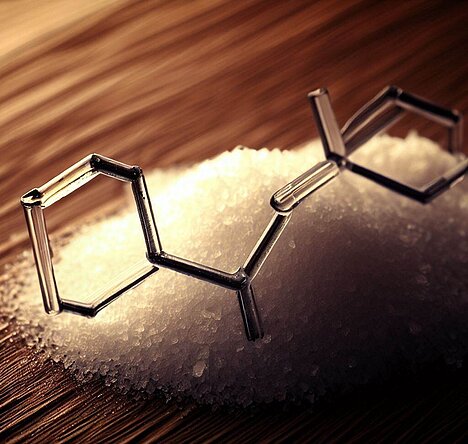Butylated hydroxyanisole

What is butylated hydroxyanisole?
Butylated hydroxyanisole is a synthetic additive that acts as an antioxidant. This means that it prevents fats and oils from becoming rancid and smelling or tasting unpleasant. It is mainly used in dry food and snacks for dogs to extend shelf life.
What are the benefits of butylated hydroxyanisole?
The benefit of butylated hydroxyanisole is that it keeps the food fresh and therefore improves the quality and taste. It can also help to make your dog less susceptible to infections as it scavenges free radicals that can cause cell damage.
What are the disadvantages of butylated hydroxyanisole?
The disadvantage of butylated hydroxyanisole is that it can be harmful in high doses. It is suspected of being carcinogenic and damaging to the liver. It can also trigger allergic reactions or gastrointestinal complaints. It can also impair the absorption of vitamins and minerals.
How much butylated hydroxyanisole is allowed?
The European Union has set a maximum amount of 150 mg/kg feed for butylated hydroxyanisole. This amount is considered safe for dogs as long as it is not regularly exceeded. However, there are also countries that have a lower limit or ban butylated hydroxyanisole altogether.
How can you avoid butylated hydroxyanisole?
If you want to avoid butylated hydroxyanisole, you should check the label of the food. The additive must be labeled there with its name or the E number E320. You can also look for food that contains natural antioxidants such as vitamin E or rosemary extract. These are not only healthier for your dog, but also for the environment.
Butylated hydroxyanisole is an artificial additive that protects the food from oxidation. It has both advantages and disadvantages for your dog. You should make sure that you do not exceed the recommended amount and look for alternatives if necessary.
Properties 2
Are you looking for other ingredients with a specific property?
Just click on them to find more.
If you notice any signs of hypersensitivity or poisoning in your dog, you should see your vet immediately. We are not a substitute for a vet, but we try to be as accurate as possible. Every dog reacts differently and we recommend you get a second opinion or consult your vet if in doubt.
Stay healthy and take good care of your four-legged friend!😊
Similar to Butylated hydroxyanisole
4-Hydroxybenzoic acid heptyl ester is the heptyl ester of the aromatic carboxylic acid 4-hydroxybenzoic acid. This means that a heptyl residue (a chain of seven carbon atoms) is attached to the acid...
Preservatives are substances that prevent or delay the multiplication of microorganisms such as bacteria, fungi or yeasts. They are often added to foods to protect them from spoiling and to maintain...
There are different types of antioxidants, which can come from natural or artificial sources. The most important natural antioxidants include Vitamin E: It strengthens the immune system and...
Butylated hydroxytoluene is a synthetic substance that belongs to the phenol group. Phenols are organic compounds consisting of a benzene ring with one or more hydroxyl groups. BHT is mainly used...



